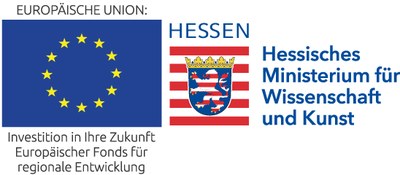2DIBS
- Contact us
-
AG Spektroskopie und Optik
Sangam Chatterjee
Secretary: Anja Denhardt
Room 431 (4th Floor)
Tel.: +49 (0)641 99 33101
Anja Denhardt
- Validation of highly stressed multilayer systems for innovative optics through simultaneous double-sided coating - 2DIBS
-
Validation of highly stressed multilayer systems for innovative optics through simultaneous double-sided coating - 2DIBS
Optical elements such as spectacle lenses, laser mirrors, optical lenses for microscopes and cameras are coated with functional layers. Depending on the design, this can be used to control the transmission, reflection or other properties of the optical system. Through the targeted application of multilayers[1]In theory, any desired optical properties can be realized. Thermal vapor deposition in vacuum systems is state of the art. This process is established for coating layers on glass optics.
However, it also has some disadvantages: The coating process can only be controlled to a limited extent; depending on the process, the substrates become hot during coating and must be turned over manually for double-sided coating. The serial, one-sided vapor deposition can lead to undesirable tension between the coating and the substrate. This means that the process is only suitable for plastic optics or demanding layers to a limited extent.
Therefore, alternative coating technologies have been developed in the past. One of the most powerful coating technologies currently available is "ion-beam sputter-deposition" (IBS). This allows the production of extremely sophisticated thinlayersystems on a wide variety of substrates. The layers produced with this method are qualitatively superior to the layers produced with thermal coating processes. In the IBS process, the substrate sides are also coated one after the other.
The aim of the 2DIBS project is to further develop IBS technology significantly. For this purpose, a coating system is to be developed in which the substrate is coated simultaneously from both sides (2DIBS). A new ion source is to be developed in order to produce extremely homogeneous layers. The project is based on over 50 years of experience with the development of ion sources in space research at the I. Physics Institute of the Justus Liebig University in Giessen. It can be assumed that the previous limitations of IBS technology will be overcome with 2DIBS technology. The double-sided, symmetrical, simultaneous coating prevents undesirable tension, it accelerates the coating process and creates high-quality layers.
In order to ensure a high practical relevance of the development project, associated industrial partners are involved in the development in the form of an industrial advisory board. The industrial advisory board can help determine specific development goals and accompanies the project progress. Concrete technology transfer activities will be coordinated in due course.





